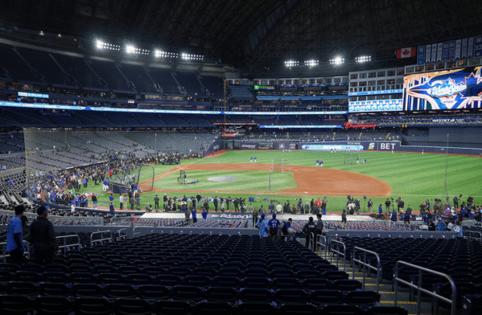John Romano: A new home for the Rays? No, it's not what you're thinking.
Published in Baseball
TAMPA, Fla. — The clock is ticking, and the stakes are high.
The Tampa Bay Rays are under new ownership, and the team’s zip code looms larger than its winning percentage. Everyone wants to know what Major League Baseball is thinking and where the Rays will eventually land.
If I may offer a suggestion:
Somewhere outside the gated community of the AL East.
That’s not what you were expecting, I know. The new owners, MLB commissioner Rob Manfred and most everyone with a pulse has ideas about Tampa Bay’s unsettled stadium situation. And, no doubt, that is priority No. 1 for the team’s long-term health.
But realignment should be priority No. 1B.
They go hand-in-hand, in case you were wondering. A better stadium situation is needed for increased revenues, and a more palatable division is necessary for competitive purposes. You need only look at baseball’s continuing October trend to figure that out.
The World Series, once again, features two payroll heavyweights. The Dodgers were No. 2 in spending and the Blue Jays were No. 5. That’s similar to last season when the Yankees were No. 2 and the Dodgers were No. 3.
Baseball loves to talk about how long it’s been since any team has won back-to-back World Series titles, as if that is the ultimate barometer of parity. But the truth is, the big spenders have a built-in advantage when it comes to the scoreboard and, subsequently, take turns throwing postseason parades.
Yes, there will always be outliers. The Rays, themselves, have famously carried the low-revenue banner into previous Octobers. And underachievers such as the Mets and Angels prove that money does not guarantee success. But the overall numbers are indisputably in favor of teams with the biggest bankrolls.
If you look at pennant winners over the last decade, 15 of the 20 were top-10 payroll teams. If you look at actual World Series champions, 8 of 10 (including this season) had top-10 payrolls. For the mathematically challenged, that means 33.3% of the richest teams have won 75% of the pennants and 80% of the World Series titles.
Pretty convincing, huh?
So if we can agree that finances have led to an uneven playing field, what’s the solution?
A salary cap is the simple answer, and you’re going to hear more and more about that possibility. It feels like some owners are already bracing for the possibility that the 2027 season will be disrupted after the current collective bargaining agreement with players expires next year. That’s because owners are expected to push toward a salary-cap scenario and the players union is adamant that it will never happen.
Even a year away that showdown has the look of an ugly impasse.
Which means baseball might need to look at other ways to solve competitive balance issues. And realignment could be a simple answer.
MLB has been eager to get the uncertain stadium situations of the Rays and Athletics resolved so the league can dangle expansion (and 52 new jobs for MLB players) as a bargaining chip. And once the league grows from 30 to 32 teams, realignment is sure to follow.
The American and National leagues likely will be split into four divisions of four teams each, and that makes realignment not only advantageous but necessary. And the Rays should be pushing for a radical reimagining of divisions.
Have you ever noticed that some of the best success stories of low-revenue teams come from the Central divisions? One of the reasons is because there are fewer behemoths in their way. Look at the top half of the majors in terms of payrolls in 2025 — only one Central team (the Cubs) is represented. In the bottom half of payrolls, there are nine Central teams.
Do you suppose it’s easier for the Guardians or Royals or Twins to slip into the postseason when the biggest spender in their division is the Tigers? Compare that to the Rays, who were in a division with four teams (Yankees at $293 million, Blue Jays at $239 million, Red Sox at $193 million and Orioles at $162 million) with bigger payrolls than Detroit at $143 million?
Geography needs to be a major consideration in realignment, but so does economics. Low-revenue teams such as the Rays, Marlins and Athletics need to moved out of richer neighborhoods and into divisions where they have a more realistic chance of competing.
Does that mean an Atlantic division with Tampa Bay, Miami, Washington and Pittsburgh? Or a mountain division with Las Vegas, Arizona, Colorado and maybe a Salt Lake City expansion team?
That wouldn’t change the fact that the big spenders will still be in the way once the postseason begins, but at least it would give the scrappers a fighting chance in a shorter series. Above all else, it would mean a team such as the Rays would not need a pitch-perfect $90 million roster simply to survive the regular season against teams spending three times as much.
Yes, a new stadium somewhere in Tampa Bay is crucial for the franchise’s survival.
But so is a new home in baseball’s hierarchy.
____
©2025 Tampa Bay Times. Visit tampabay.com. Distributed by Tribune Content Agency, LLC.







Comments